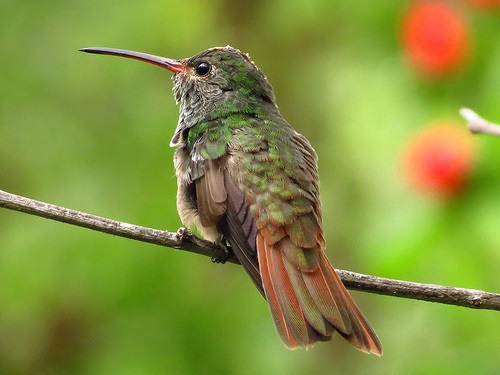Written by Manager Colleen Curran Hook
With the fast pace lives we lead, there is something very calming about having nature at your doorstep. Real live nature reminds us of the beauty in life, the seasons, the rise and fall of the sun, as well as the pull of the moon. Most of us won’t have vast reaches of wilderness to get lost in close to home, but we can create patches and pockets of wildness to enjoy in our own backyards.
In the months of September and October, the valley will enjoy the arrival of hummingbirds. The Ruby-throated Hummingbird has started their migration—returning to their wintering grounds in Central America and Mexico. Of the 323 different hummingbirds seen in the Americas, 21 species have been seen in North America. It is interesting that hummingbirds are found only in the Western Hemisphere! In the Valley you might see four different hummingbirds: Buff-bellied (permanent resident), Ruby-throated and Rufous (migrant in September/October) and the Black-chinned Hummingbird (uncommon).

The following 5 TIPS will help you attract hummingbirds to your backyard:
Design in Layers: Build a top, middle and lower canopy of plants in your garden. The habitat provides food, place to hide from predators, nesting and resting sites in your yard.
Plant Flowers with Nectar: While hummingbirds are attracted to red tubular plants, they are opportunistic feeders and are mainly looking for nectar. Nectar is rich in sugar and attracts pollinators like bees and hummingbirds. Our top plants at Quinta Mazatlan include the Turk’s Cap, Scarlet Sage, Coral Bean Tree and Wild Olive Tree.
Hang Feeders: Feeders should be used as “frosting on the cake” with the cake being the habitat! Most flowering plants provide 20% sugar—so that is your ratio for your nectar creation. Mix 4 parts water to 1 part sugar. There is no need for red dye as it might hurt the birds—and the red on your “hanging feeder” will attract attention. The feeders should be cleaned twice a week.
Insects are Good-Avoid Insecticides: The birds feed their young a diet of small insects. The adults get their protein from mosquitoes, spiders, gnats and others. Some even hang overripe melons and bananas near a feeder to attract extra insects. Obviously using a product that kills insects will also harm the birds. Let the hummingbirds control the insects!
Don’t Forget the Water: A constant source of water will complete your hummingbird haven. If you have a bird bath, add a couple of rocks to give the tiny birds a shallow place to bathe. You can also add a drip fountain attachment or a simple sprinkler for them to fly through.
These Jewels in Flight known in Spanish as Joyas Voladores are beautiful to view and they help control our mosquitoes as they feed on insects! If you are interested in designing a wilderness in your yard consider taking the Backyard Habitat Steward Program at Quinta Mazatlan.








